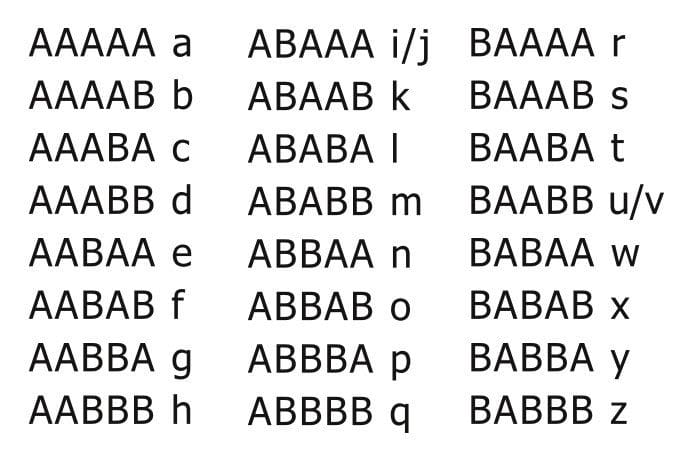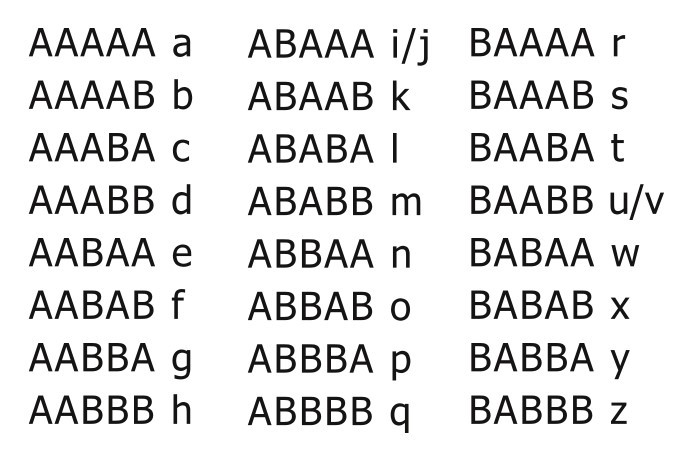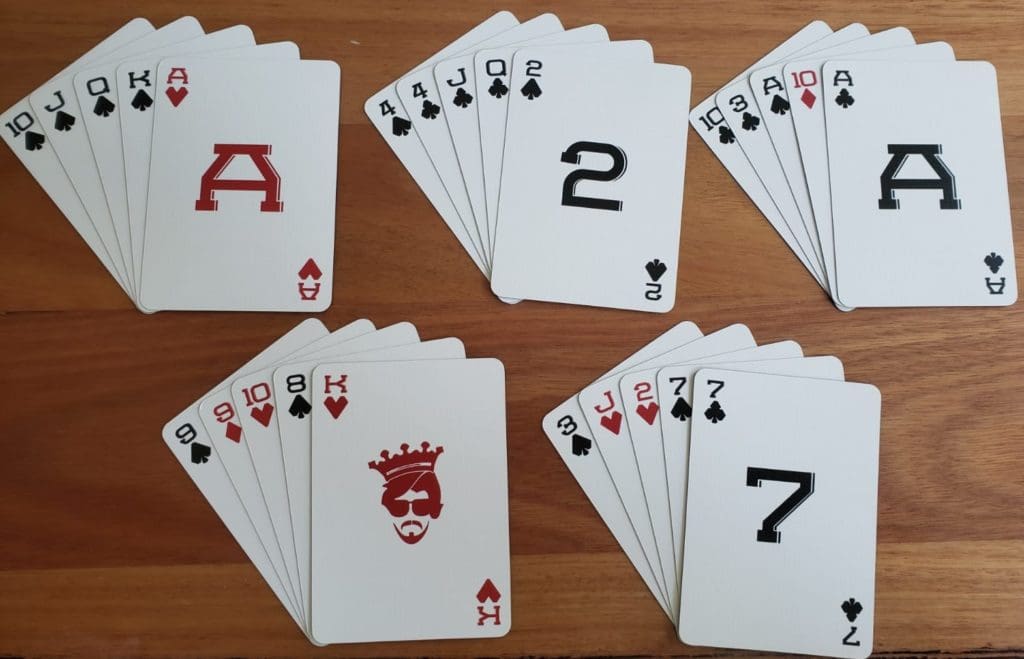

Note that in Bacon’s original key, “I” and “J” were interchangeable, as were “U” and “V”. When you make your own key for reference, make sure it reflects what is missed out or combined (like the above image) or otherwise (don’t expect your players to guess this!). You could even add in further A/B combinations of your own for punctuation.
Fakin’ Bacon
This cipher is all about presentation – how it looks – rather than the content – what it says. So have a look at this next passage; the different mode, or typeface is a simple underlining of letters.

An important element Sir Francis brought to us was the popularising of segmenting a message in character groups that would hide the intended message in a different set. With a seemingly innocent piece of writing like the above, splitting it up to find groups of five letters would indicate the sets of five ‘a’ or ‘b’ combinations per block.

Identifying what makes “A” different from “B” in these blocks gives us our AAAAA etc, and from there we can use our key to find the secret message.

Presenting Bacon
There are a few ways to note our B as different from our A. Having a different colour or font, an underline, upper versus lower case, a strategically placed dot or dash, italicising or bolding and many other possibilities make for our ‘substitution’ to find. Just remember to keep your text to multiples of five for deciphering (use a thesaurus!) or, have your surplus text marked in a way that has no deciphered equivalent (e.g. BBBBB).
Bacon Alternatives
As we only need two “modes” to make Bacon happen (our “A” and “B”), there exists a huge amount of ways this can be incorporated into an Escape Room, hidden messages between friends, or your backyard scheming. Here’s a few of our favourites:
Playing Cards
We’ve got red cards. We’ve got black cards. Stack them in the desired order and bam! Code time. (Just make sure your intended recipient knows to expect Bacon instead of looking at suits/faces, and isn’t prone to a good bit of shuffling)

Books and Newspapers
An easy one to hand off longer messages to your accomplice. Make your notations and pass it along. Suspicious looking handover at the park optional. (Remember: we don’t count spaces or punctuation marks)
 Set featured image
Set featured imageAlTeRnAtInG cApS
The internet’s own mockery messaging is a modern way to use Bacon’s method. Just be a bit more intentional with the letters you capitalise.

Two things: have your key to decoding (in your blocks of five), and then have fun with disguising the message! Let us know what tricky hiding place you’ve made! info@eludegames.com.au

